How To Grow A Heart-Leaf Philodendron: Fall In Love With This Easy-Care Houseplant
Heart-leaf philodendrons are fantastic houseplants. With their simple care requirements and long vines dotted with heart-shaped leaves, you’re sure to fall in love.
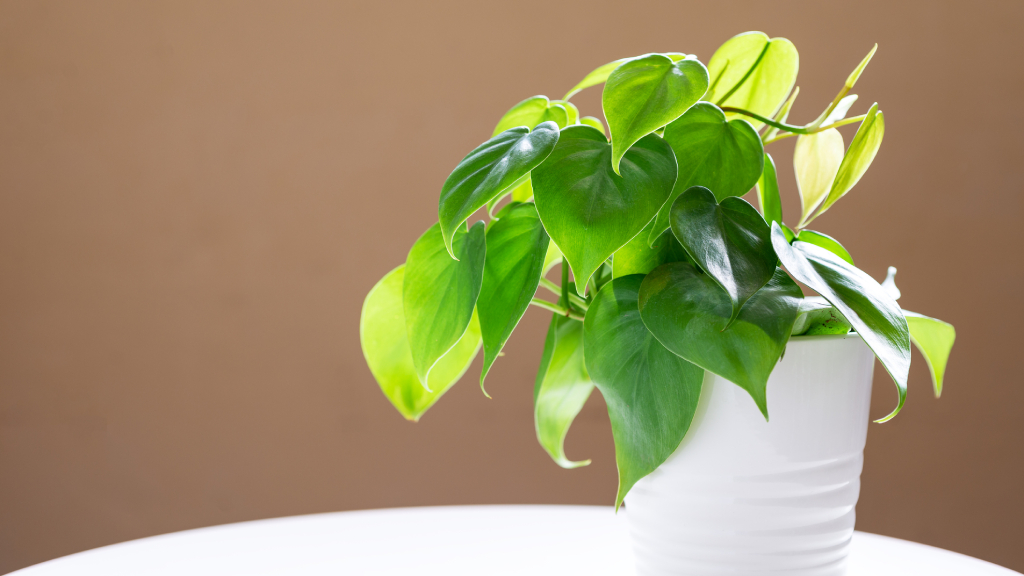

The heart-leaf philodendron is a great starter plant for beginner gardeners. Caring for them is simple and their long vines covered in heart-shaped leaves will make you fall head over heels in love. Though heart-leaf philodendrons are easy to grow, there are still some basics you should know. This guide will cover all your questions about how to care for a heart-leaf philodendron, plus the age-old question: philodendron vs. pothos?
Quick Facts
- Botanical name: Philodendron hederaceum, formerly P. cordatum or P. scandens
- Height: up to 20 feet (6 m) outdoors, up to 6 feet (1.8 m) indoors
- Spread: up to 6 feet (1.8 m)
- Sun exposure: part to full shade
- Soil requirements: well-draining soil-based potting mix
- Hardiness zones: 10b-12
- When to plant: spring or fall
Heart-leaf Philodendron Care
A heart-leaf philodendron plant is a great addition to any home. It is adaptable, easy to grow, and looks great spilling out of a hanging basket, climbing up a moss pole, or cascading over the edge of a bookshelf.
The heart-leaf philodendron is native to Mexico, the Caribbean, and Central and South America. It is a vining member of the Araceae family that can grow up to 20 feet (6 m) long in its natural habitat with leaves measuring up to 12 inches (30.5 cm). In an indoor setting, though, leaves are typically 4 inches (10.2 cm) long.
Light
One of the benefits of heart-leaf philodendrons is their ability to grow in low light settings. This makes them ideal for offices, apartments, dorm rooms, and other dimly lit spaces.
Heart-leaf philodendrons grow best in medium light, but can tolerate partial to full shade. They grow well in locations that receive as little as two hours of bright indirect sunlight per day. Avoid direct sunlight as it can burn and discolor leaves.
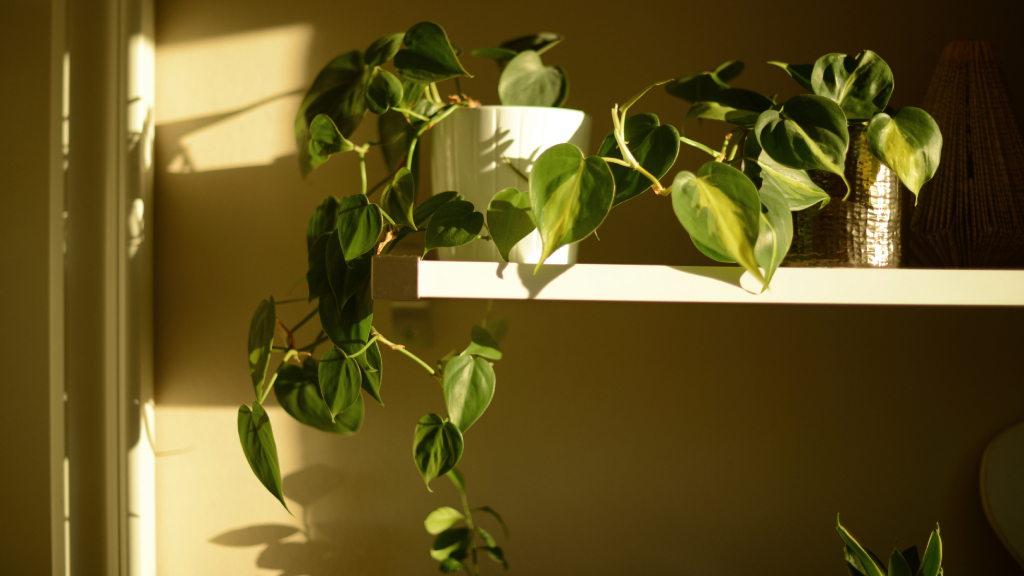
Water
Another benefit of the heart-leaf philodendron is its drought-tolerance. These plants prefer moist soil, but are very forgiving if you forget to water them. In shady locations, they can last up to two weeks or more without water.
For the best growth, keep soil consistently moist. Be careful to avoid overwatering as this will cause leaves to turn yellow and drop. Water when the top inch (2.5 cm) of soil is dry to the touch. Cut back on watering from fall through late winter when plant growth slows.
Sign up for the Gardening Know How newsletter today and receive a free copy of our e-book "How to Grow Delicious Tomatoes".
Temperature & Humidity
As a native of the tropics, heart-leaf philodendrons prefer warm, humid climates. However, they are very tolerant plants so as long as temperatures stay above 50 degrees F (10 C) they are fine. For this reason, heart-leaf philodendrons are suited to indoor growing only in most USDA hardiness zones.
Heart-leaf philodendrons like humidity, but they grow well even in dry indoor conditions. You can raise humidity levels for your heart-leaf philodendron by placing your plant on a shallow dish of pebbles filled with water or grouping your houseplants together.
Another way to make your plant happy is to place it in the kitchen or bathroom. Heart-leaf philodendrons are well-suited to these rooms, which often have less sunlight and more humidity than the rest of the house.
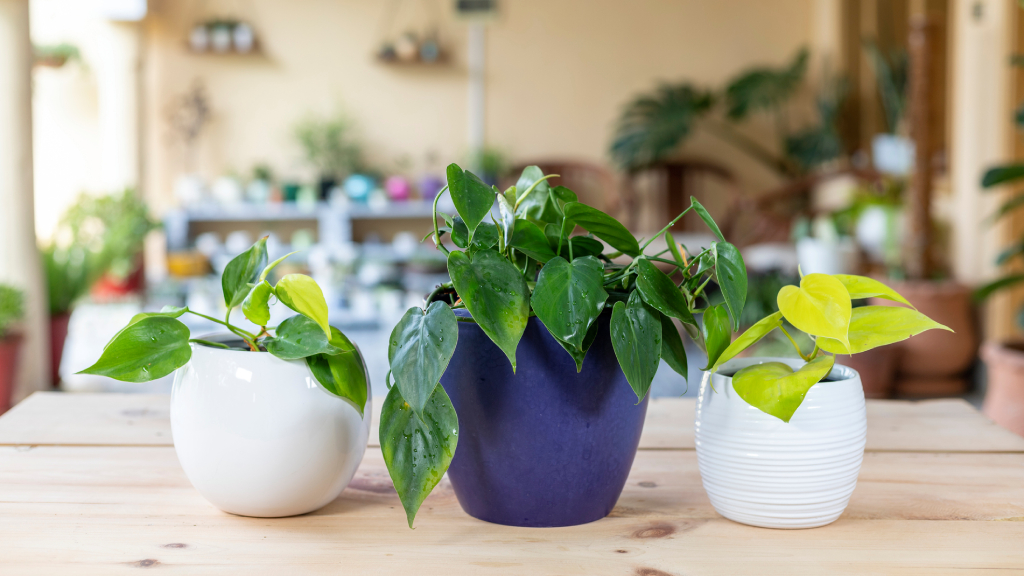
Soil
Plant your heart-leaf philodendron in a rich, moist potting mix. Soil-based mixes are best for these plants that naturally grow in the fertile forests of the tropics.
In keeping with their easy-going nature, heart-leaf philodendron plants are tolerant of almost any type of soil. They can grow in clay, sand, or loam, as well as soil that is acidic or slightly alkaline.
Fertilizer
Feed heart-leaf philodendrons with a houseplant fertilizer once every three to four months during the growing season to keep them looking their best. Do not over-fertilize as this can cause brown, curling leaf tips.
Problems, Pests & Diseases
Heart-leaf philodendrons do not suffer from many pest or disease problems. Though uncommon, plants are sometimes infested by aphids, mealy bugs, scales, and spider mites. Heart-leaf philodendrons also occasionally develop leaf spots.
A more common issue is overwatering, which can cause root rot. Too much water or too little light can also cause leaves to turn yellow and eventually drop. If your heart-leaf philodendron looks leggy, it is not getting enough light. Move your plant to a brighter location and prune it to make it fuller.
Pruning & Propagation
Keep your heart-leaf philodendron full and bushy by pruning it. This is also a great opportunity to grow more plants for free via propagation.
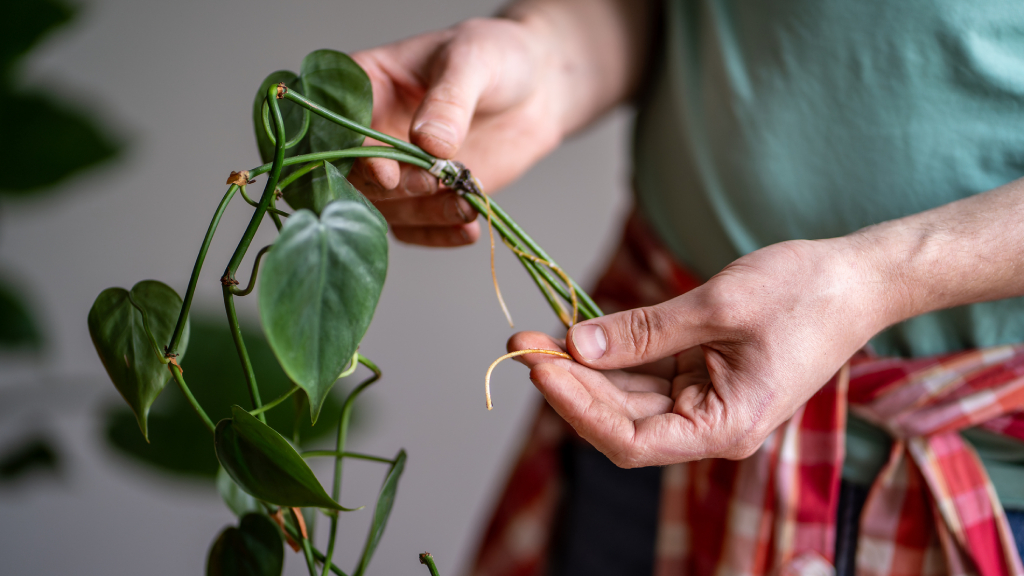
These plants are perfect to share with someone you love. Not only do their adorable heart-shaped leaves make them seem like grow-your-own valentines, but propagating them is as easy as it gets.
The easiest way to propagate heart-leaf philodendrons is by cutting. Snip the stem just above a node. If you’re not sure where to find a node, they are located near the leaves. There may be aerial roots already growing there. Cut the stem at a 45 degree angle with clean clippers.
Once you have your cuttings, place the stems in water and wait for them to root. This normally takes one to two weeks. From there, transplant rooted cuttings to a container filled with potting mix. You can also plant unrooted cuttings straight into potting mix. Keep cuttings moist to help roots form.
Repotting
Repot heart-leaf philodendrons once every two or three years. They mainly grow long, not wide so it takes time for these plants to outgrow their containers. Check to see if it’s time to repot by looking through the drainage holes at the bottom of your pot. If you see roots, it’s time.
Increase the pot size by a diameter of 1 inch (2.5 cm). Repot into a fertile potting mix and water.
Common Varieties
Philodendron micans - a dark green variety with velvety soft leaves that will elevate any indoor plant collection, it’s scientific name is Philodendron hederaceum var. hederaceum
‘Lemon-Lime’ - a vibrant neon green variety that almost appears yellow and looks very dramatic with darker contrasting plants placed nearby
‘Brasil’ - a beautiful variegated heart-leaf philodendron with lime and dark green leaves and stems that appear pinkish, it’s easy to find from many plant retailers

Heart-leaf Philodendron vs. Pothos
It’s the question on everybody’s minds: heart-leaf philodendron or pothos? These two houseplants look almost identical to the untrained eye, but there are a few key differences to help you tell them apart. The trick is to look at the leaves:
- Leaf Shape - Heart-leaf philodendrons have leaves that are very obviously heart-shaped with a pronounced curve and a pointy tip. Pothos leaves are often a little larger and definitely less heart-shaped than philodendrons.
- Leaf Pattern - Pothos are also often variegated with a speckled pattern, though that is not always the case. There are lime green and dark green varieties that are closer to the appearance of a heart-leaf philodendron.
- Leaf Texture - Heart-leaf philodendron leaves are flatter, thinner and have a smooth, soft touch. Pothos leaves are thicker and waxy, with a defined ridge down the center.
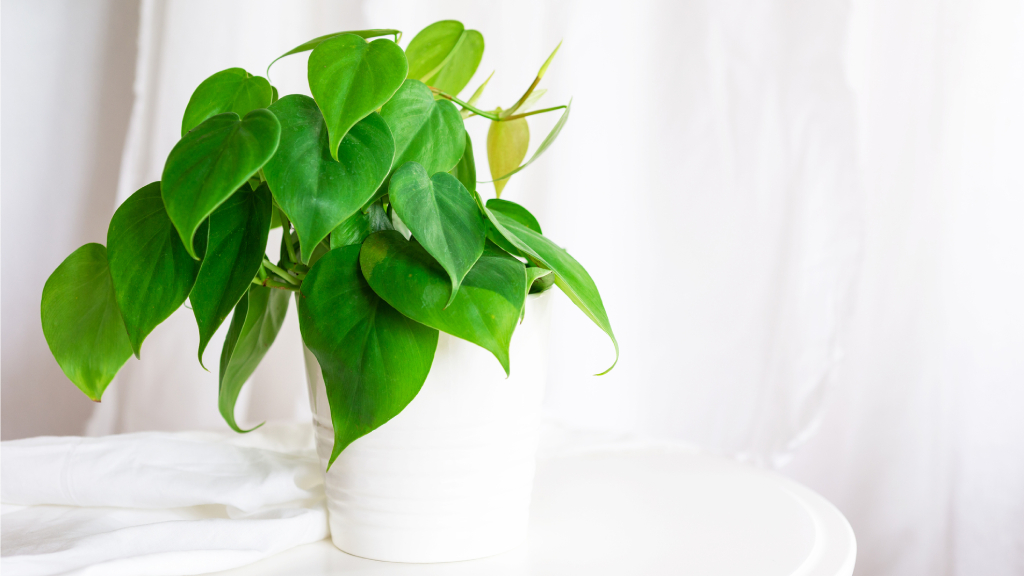
One similarity that pothos and heart-leaf philodendrons share is their toxicity. As members of the Aroid family, both are poisonous to cats and dogs. Be sure to keep these plants away from pets.
Frequently Asked Questions
Are Heart-leaf Philodendrons Rare?
The heart-leaf philodendron is one of the most common vining houseplants and has been for a long time. It’s a classic for good reason. These plants are beautiful, easy to grow, and fun to propagate.
Do Heart-leaf Philodendrons Climb or Hang?
They do both! Heart-leaf philodendrons are wonderful houseplants for hanging containers. They are also great climbers and can grow up a moss pole, trellis, or even around a mirror as a fabulous living frame.

Laura Walters is a Content Editor who joined Gardening Know How in 2021. With a BFA in Electronic Media from the University of Cincinnati, a certificate in Writing for Television from UCLA, and a background in documentary filmmaking and local news, Laura loves providing gardeners with all the know how they need to succeed, in an easy and entertaining format. Laura lives in Southwest Ohio, where she's been gardening for ten years, and she spends her summers on a lake in Northern Michigan. It’s hard to leave her perennial garden at home, but she has a rustic (aka overcrowded) vegetable patch on a piece of land up north. She never thought when she was growing vegetables in her college dorm room, that one day she would get paid to read and write about her favorite hobby.